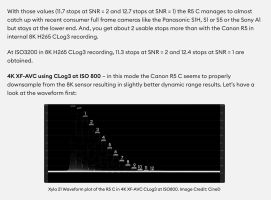Yes, but big broadcasters typically just list video specs any video they host has to conform to. They don't typically list cameras a production can or cannot use unless the broadcaster itself is the producer, and it's being edited in house by the broadcaster. If somebody makes a great show and a broadcaster wants to buy the rights, so they can broadcast or host it, they don't typically reject it because it wasn't shot on specific gear, no, they just go, "Hey, we need you to submit your content to us with these specs". To stipulate specific approved gear is to potentially dictate creative control. A DP or director or producer may be using a specific piece of gear for very specific technical or creative reasons, and to have Netflix (or any other broadcaster) come in and say "You can't shoot your show with that equipment because we don't approve of it" is ludicrous in my opinion, especially if the production is submitting finished video that they just have to distribute. No, they should just say finished video needs to conform to specs x, y, and z in order for us to host it. Again, if Netflix is the producer, that's a different story.It's just a matter of quality control. Big broadcasters have been doing this for years now, in order to maximize their workflows and minimize quality gaps between productions.
As far as I know, they consider image quality (the technical standard, evaluating the signal to noise ratio, dynamic range, black levels, and the list goes on), codec (options, bitrate, color subsampling, bit depth) and also inout and output terminals. Cameras such as the C200 and Pocket 4K Cinema Camera were rejected due to the lack of timecode inputs, per example. And since the R5C does have a timecode inout and plenty of codecs, even a RAW format, my guess it that it was something regarding the image quality of the camera - and they could be spot on on the lack of Canon Log 2, since it's the required gamma for most of the certified Canon cameras on the Netflix PTA website.
Upvote
0

